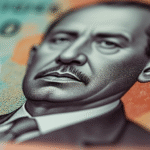Background on Key Players and Relevance
The recent escalation in teachers’ protests in Mexico has led to the burning of the Sindicato Nacional de Trabajadores de la Educación (SNTE) headquarters in Mexico City by members of the Coordinadora Estatal de Trabajadores de la Educación de Guerrero (CETEG). Understanding the roles of these organizations is crucial to grasping the situation’s gravity.
The SNTE, or National Union of Education Workers, is one of Mexico’s largest and most influential teachers’ unions. It represents over 1.5 million educators across the country and has traditionally maintained close ties with the Institutional Revolutionary Party (PRI). The union’s power and reach make its stance on educational matters significant for Mexico’s education system.
CETEG, on the other hand, is a coordinating body of teachers’ unions from Guerrero, Oaxaca, Chiapas, and Zacatecas. These states have experienced internal conflicts within the teaching profession, with disputes over teacher evaluations and autonomy. CETEG represents teachers who oppose the federal education reform initiated by the administration of President Enrique Peña Nieto, which aimed to introduce performance-based evaluations and autonomy for teacher appointment and promotion.
Protest Actions and Reactions
Burning of SNTE Headquarters:
- Members of CETEG stormed and set fire to the SNTE headquarters in Mexico City after breaking through the main entrance with wooden sticks.
- The SNTE condemned the violent acts and announced that it would file a complaint with authorities to determine responsibility and apply legal sanctions.
SNTE Response:
- The SNTE emphasized that the violent acts do not represent the majority of Mexican teachers who adhere to principles of civility, respect, and commitment to public education.
- The union condemned any form of violence, stating that it does not contribute to resolving the legitimate demands of the teaching profession.
Government and SEP Responses:
- The Secretaría de Educación Pública (SEP) strongly condemned the vandalism against public and private buildings, including the SNTE headquarters.
- The Mexican government reiterated its call for peaceful and respectful dialogue to reach agreements favorable to the national teaching corps, quoting President Benito Juárez: “Nothing by force, everything by reason and right.”
- The Secretaría de Gobernación (Segob) also strongly rejected the vandalistic acts by dissident teachers, which led to the fire that was controlled by Mexico City’s fire department to prevent greater damage.
Ongoing Debates Among Teachers
As of the edition’s closure, teacher contingents from Oaxaca, Chiapas, Guerrero, Zacatecas, and Mexico City continued debating whether to return to their respective states or maintain the protest in the capital’s Zócalo.
Key Questions and Answers
- Who are the main players involved in the protests?
- What are the main issues driving the protests?
- How have authorities responded to the protests?
The primary organizations are the Sindicato Nacional de Trabajadores de la Educación (SNTE), a large teachers’ union, and the Coordinadora Estatal de Trabajadores de la Educación de Guerrero (CETEG), a coordinating body representing teachers’ unions from Guerrero, Oaxaca, Chiapas, and Zacatecas.
The teachers’ dissatisfaction stems from the federal education reform introduced by President Enrique Peña Nieto, which aimed to implement performance-based teacher evaluations and grant autonomy for teacher appointment and promotion.
Authorities, including the SNTE, SEP, and Segob, have condemned violent acts and called for peaceful dialogue to resolve the teachers’ demands. They have also filed complaints and emphasized respect for the law.






